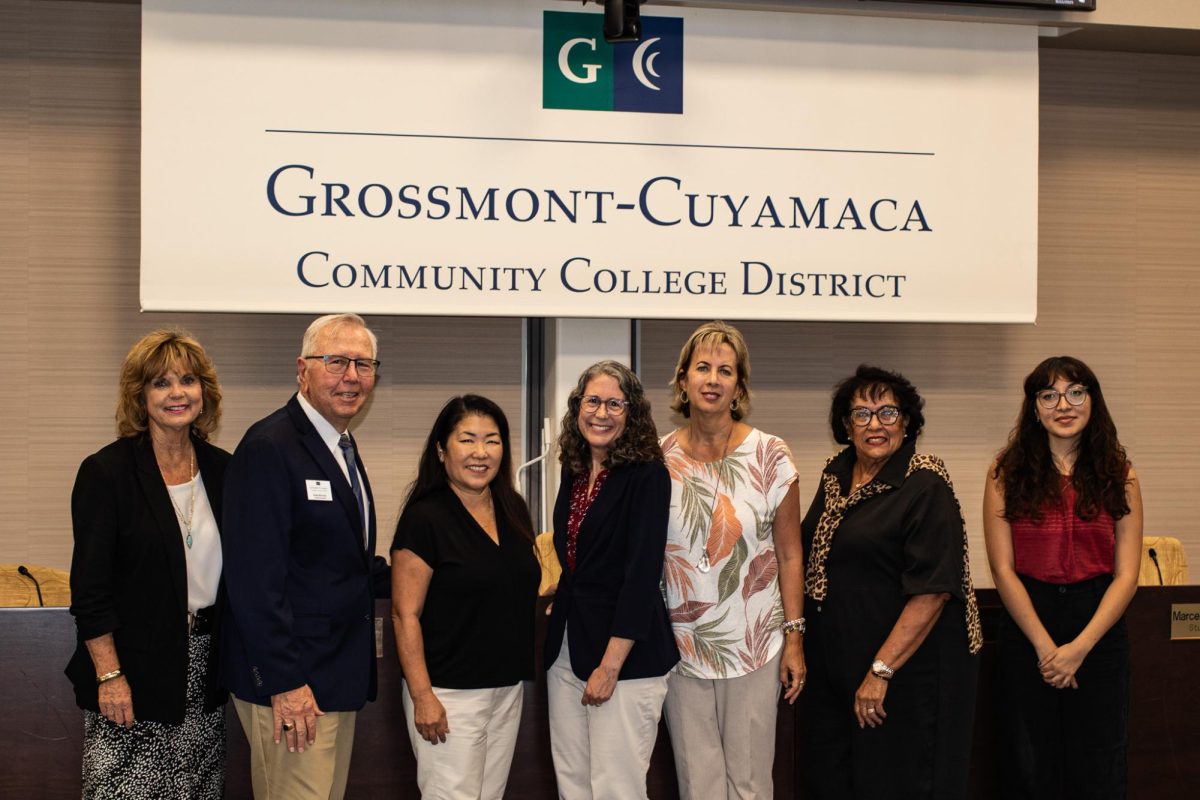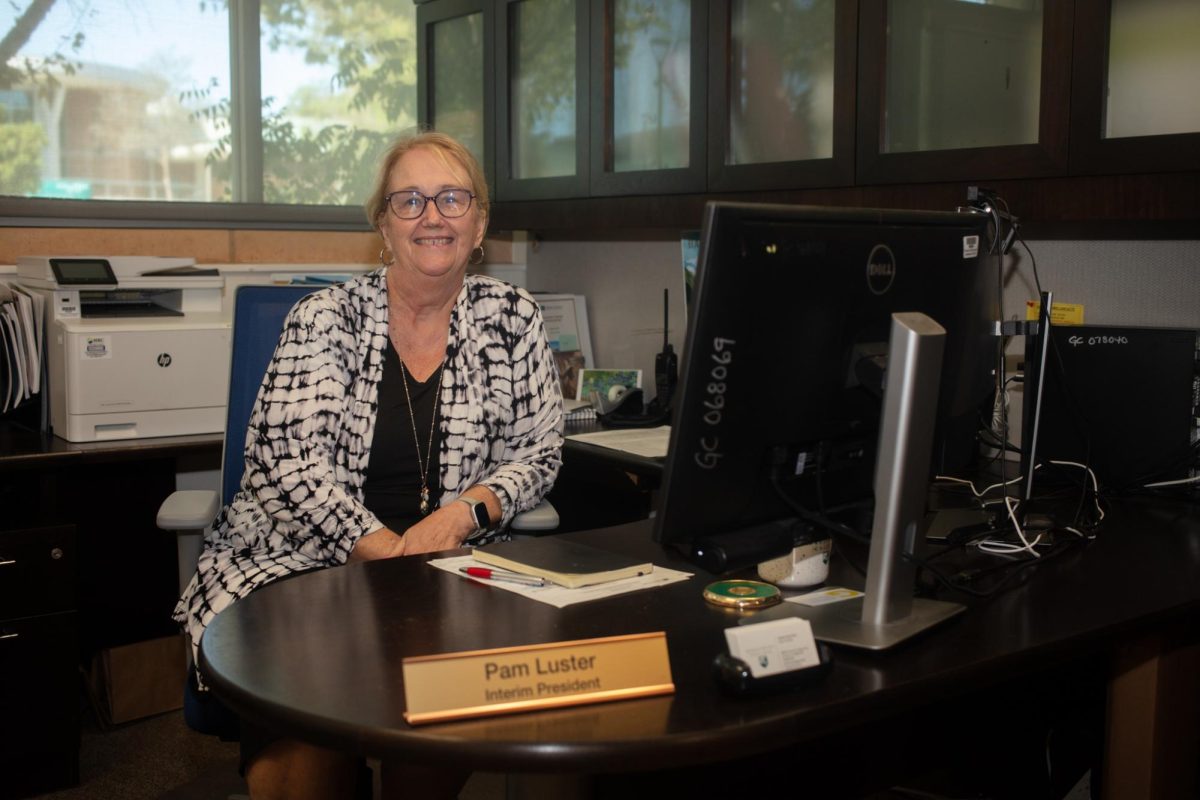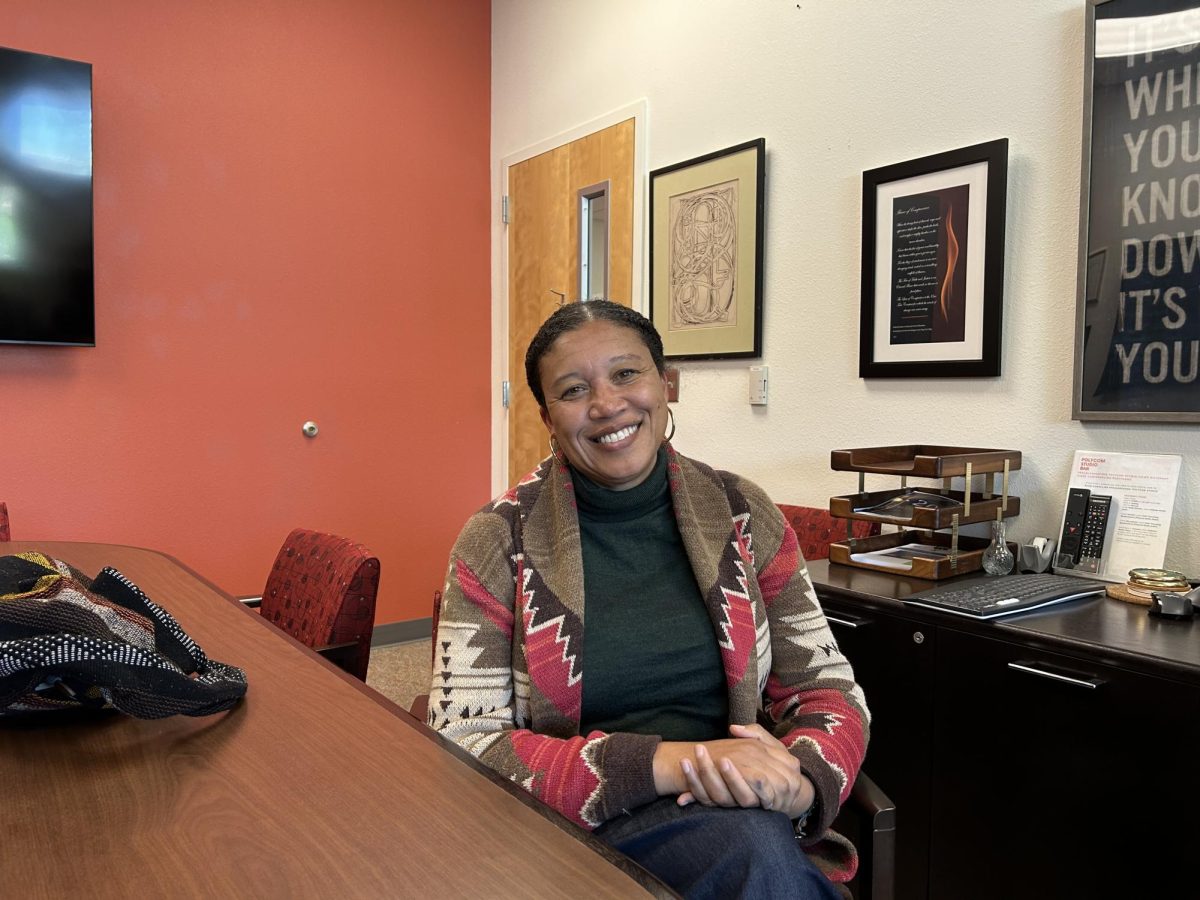, Ph.D
GROSSMONT COLLEGE — You’ve probably heard of the U.S. Department of Agriculture’s new way of showing dietary guidelines, using a dinner plate to illustrate the healthy foods that we should eat, in place of the old food pyramid. The plate is divided up into fruits, vegetables, protein, and grains, with dairy on the side, and the message is that a wide array of foods from abalone to zucchini are part of a balanced diet. The divided plate suggests we should fill half our plate with fruits and vegetables and avoid empty calories and super-sized portions. Check it out—dessert is gone!
Like the new MyPlate dietary guidelines for healthful eating, we have a full plate of lean priorities for GCCCD wellness this year. To nourish our mission of service to students, employees, and the community, we are working on several key priorities–Educational Master Plan, Accreditation Preparation, Budget Stewardship, and Student Success. At the same time, we’re striving to maintain a healthy balance of improving education for our students and ensuring that our employees feel valued, even if it’s only with a simple Fun Friday celebration, President’s barbecue, or Chancellor/Classified Staff conga line to recognize the quarterly award winner.
Educational Master Plan
As part of our Educational Master Plan (EMP) process, we recently held forums with approximately 60 community members and 40 students from Grossmont and Cuyamaca, as well as an all-day workshop with nearly 90 staff, faculty, administrators, and students from across the District. We got some wonderful feedback about what we’re doing well and should keep on doing, as well as what else we could be doing, as we plan for GCCCD’s future. I was impressed that so many people took time to share their experiences and thoughts with us, and how seriously they considered the question of the next phases of our District’s development and service to the community.
Findings from the forums, workshops, hundreds of resources, and hours of background research are being woven into the final EMP document. Both colleges and district services will have stand-alone “chapters” to address their specific priorities and goals. Document drafts will be shared through our consultation processes in November, and we will present our final EMP to the Governing Board in December. Facilities, technology, human resources, and strategic plans will all be updated to reflect the new EMP priorities over the next year.
Our thanks go to Jerry Buckley, Senior Dean of Research, Planning and Institutional Effectiveness, and consultant Phyllis Sensenig for organizing the forums and leading the yearlong process of creating the Educational Master Plan that will guide our planning for the next 15 to 20 years. I send equal thanks to the additional EMP Steering Committee members: Julianna Barnes, Barbara Blanchard, Sue Gonda, Chris Hill, Linda Jensen, Shirley Pereira, and Michael Wangler, who masterfully facilitated the EMP Retreat and forums, and to all of you who shared your time and thoughts.
I particularly enjoyed comments from our students about their experiences at Grossmont and Cuyamaca: “The teachers and staff are all very nice;” “This is not just work to them. It’s their life;” and “They actually care for you, and this makes it easier to learn.” Hearing those words was as sweet as any gooey dessert.
Accreditation
Our accreditation comes up for reaffirmation in 2013, and both colleges are well underway in preparing their self-study documents. Accreditation Steering Committees are formed for both colleges, and we’ve established a District Accreditation Coordinating Committee to provide a consistent way for those leading the self-study and site visit preparation to share processes and make meaning of their experiences together, as well as to provide a transparent interface regarding accreditation with our Governing Board.
It is important to remember that accreditation, like a proper diet, is something that needs our everyday attention–not the sort of last-ditch effort made before a class reunion to lose extra pounds that crept up over the last decade. In preparation for our comprehensive evaluation visit, there will be extra work to ensure we have proper processes and evidence in place, but our attention to accreditation standards and improving our organization goes on every day, year round. You can tell when an institution is “off its diet,” just like you can see the slippage in your bathroom mirror when French fries take the place of sit-ups.
For those of you wanting to learn more about accreditation process and standards, here are a few resources:
· A new, free online “Accreditation Basics” workshop is now available from ACCJC. The workshop is a flexible, self-paced introduction to the basic principles of accreditation that you can complete anytime that suits your schedule. You can stop and start, and the workshop takes approximately two hours.
· Here is a link to Twelve Common Questions and Answers about Regional Accreditation that you may find helpful, as well.
· By all measures, the most FUN resource is this delightful short video, “What is Accreditation,” which Chris Hill and Barbara Blanchard (co-chairs of Grossmont’s accreditation team) developed and have linked to their GC Accreditation web site. The folks at ACCJC liked it so well that they added to their training resources!
I guess you could say that our accreditation work is the meat (or to many of us, tofu) and potatoes of a successful college district.
Budget Stewardship
When the San Diego Union-Tribune wrote about the approval of our 2011-12 budget, the headline read East County college district adopts lean budget. We removed every ounce of fat in our budget –one might argue we’re well down to the bone – reflecting the third consecutive year of reduced funding from the State, while factoring in the possibility of more harsh –dare we say “cold”— cuts throughout the year.
Now it looks like our predictions for further State cuts will come true, although we won’t know for sure until mid-December. Thankfully, our Board prepared for the worst-case scenario in approving the budget, and we shouldn’t have to make any more cutbacks beyond the painful ones we’ve already made this year.
We realize that we need to find funding sources other than the money from the State that now accounts for 94 percent of our budget. Our new Foundation for Grossmont and Cuyamaca Colleges is working on developing relationships with alumni and supporters who want to give back to our colleges, and we’re also pursuing grants that would provide new funding avenues. Developing new funding streams is a slow process, not unlike shifting one’s body weight from fat to lean muscle through dedicated diet and exercise. In both cases, the benefits are worth the perseverance and patience required.
Student Success
Although we’ve had to make some tough reductions, we’re still proud to be cooking up new ways to help our students learn and meet their goals. Grossmont College is involved in the Henrietta Lacks Project, a semester-long, multidisciplinary celebration of the award winning book, The Immortal Life of Henrietta Lacks. Recently, the Governing Board heard a presentation on how Cuyamaca College’s ESL Link program works to give English-language learners the solid foundation they need to succeed in college or work. And eager students and parents across East County are looking forward to Got Plans 2011, the massive college and career fair to be held at Cuyamaca College, Saturday, October 22. Speaking of a full plate, be sure to check out the dinners served by Chef Joe and his culinary arts students at Grossmont. They’re healthy and delicious, and it’s inspiring to see these students cook and serve the meals.
So much good is going on! I thank you all for the creative ways you keep serving up healthy solutions for body and soul that help our students get the education they need to navigate these lean times.
Bon appetit!
*
Miles is chancellor of the Grossmont-Cuyamaca Community College District
Chancellor, Grossmont-Cuyamaca Community College District







